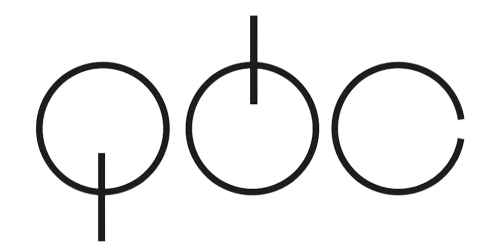
Your Bench account’s Overview page offers an at-a-glance summary of your income statement and balance sheet, allowing you to review your profitability and stay on top of your cash flow from month to month. Spend less time figuring out your cash flow and more time optimizing it with Bench. One way to assess how successful a company is in using retained money is to look at a key factor called retained earnings to market value. It is calculated over a period of time (usually a couple of years) and assesses the change in stock price against the net earnings retained by the company. Revenue is the money generated by a company during a period but before operating expenses and overhead costs are deducted.

2 Known Current Liabilities
- In other words, the more revenue, the more capital spending and purchases of intangibles we expect to see.
- Shareholder’s Equity represents 67.6% of their assets while Liabilities represent 32.4% of their assets.
- Alternatively, a large distribution of dividends that exceed the retained earnings balance can cause it to go negative.
- When a company consistently retains part of its earnings and demonstrates a history of profitability, it’s a good indicator of financial health and growth potential.
- In some cases, a company may want to repay a bond issue before its maturity.
The formula to calculate retained earnings starts by adding the prior period’s balance to the current period’s net income minus dividends. Negative retained earnings are a sign of poor financial health as it means that a company has experienced losses in the previous year, specifically, a net income loss. One year of negative retained earnings does not signal a company in complete poor financial health, but if retained earnings have consistently been negative, then a company has not been able to generate a profit for a long time. Retained earnings are usually considered a type of equity as seen by their inclusion in the shareholder’s equity section of the balance sheet. Though retained earnings are not an asset, they can be used to purchase assets in order to help a company grow its business.
Example of a Cash Flow Statement:

The formula to calculate retained earnings encompasses those elements. Due to its definition, some people may confuse retained earnings for current liabilities or assets. However, retained earnings are an equity balance on the balance sheet. Essentially, is retained earnings a long term liabilities retained earnings are balances accumulated due to profits or losses. They do not represent assets or cash balances that companies have kept. Usually, companies have an existing balance in this account, which changes from the transfer.
Common Small Business Budget Categories
The income statement displays a company’s revenues and expenses over a specified period, typically one year. The income statement begins with the company’s revenue and subtracts all expenses to determine the net income. The 3 financial statements each offer unique details with information that is all interconnected and, together, provide a comprehensive portrayal of the company’s business activities. So we know these notes will be coming due – after all, Apple is contractually required to pay them down.

Do you own a business?
- When the supply of a product increases but the demand for the product remains unchanged, the equilibrium price of the product will __________.
- Reinvesting profits back into the business can help it expand and become more successful over time.
- Upgrading to a paid membership gives you access to our extensive collection of plug-and-play Templates designed to power your performance—as well as CFI’s full course catalog and accredited Certification Programs.
- The Cash Flow Statement depicts the cash inflows and cash outflows for a company over a specified period.
- In the next accounting cycle, the RE ending balance from the previous accounting period will now become the retained earnings beginning balance.
- Most software offers ready-made report templates, including a statement of retained earnings, which you can customize to fit your company’s needs.
- The discretionary decision by management to not distribute payments to shareholders can signal the need for capital reinvestment(s) to sustain existing growth or to fund expansion plans on the horizon.
Similar to the Income Statement, Acme manufacturing’s Balance sheet (seen below) can be assessed through a variety of ratios and functions. While credit decisions should not be based on the analysis of a balance sheet or income statement alone, it does offer insight to show general business health. The final item included in shareholders’ equity is treasury stock, which is the number of shares that have been repurchased from investors by the company. It might sell the stock at a later date to raise capital or it might use it to prevent a hostile takeover. Unlike a bond, a loan is typically obtained from one lender such as a bank.
- This process adds the profits or losses to the retained earnings balance.
- A contingent liability is disclosed in the notes to the financial statements.
- The specific use of retained earnings depends on the company’s financial goals.
- Net Sales decreased 6% or $155 million to $2,237 million in the second quarter of 2024, compared to $2,392 million in the prior year period.
- As a result of higher net income, more money is allocated to retained earnings after any money spent on debt reduction, business investment, or dividends.
- Companies will also usually issue a percentage of all their stock as a dividend (i.e. a 5% stock dividend means you’re giving away 5% of the company’s equity).
- The largest component of most company’s long term assets are fixed assets (property plant and equipment), intangible assets, and increasingly, capitalized software development costs.
Working Capital
- A class of corporation stock that provides for preferential treatment over the holders of common stock in the case of liquidation and dividends.
- Contingent assets, on the other hand, are not recorded until actually realized.
- You want to earn $10 million in profits, so you will need to sell a lot of seats.
- According to the provisions in the loan agreement, retained earnings available for dividends are limited to $20,000.
- This figure is derived from the difference between the par value of common and preferred stock and the price each has sold for, as well as shares that were newly sold.
- For example, a loan contract may state that part of a corporation’s $100,000 of retained earnings is not available for cash dividends until the loan is paid.
On one hand, high retained earnings could indicate financial strength since it demonstrates a track record of profitability in previous years. On the other hand, it could be indicative of a company that should consider paying more dividends to its shareholders. This, of course, depends on whether the company has been pursuing profitable growth opportunities. If the company had not retained this money and instead taken an interest-bearing loan, the value generated would have been less due to the outgoing interest payment. Retained earnings offer internally generated capital to finance projects, allowing for efficient value creation by profitable companies. However, note that the above calculation is indicative of the value created with respect to the use of retained earnings only, and it does not indicate the overall value created by the company.
Retained earnings, shareholders’ equity, and working capital
It reconciles the beginning balance of net income or loss for the period, subtracts dividends paid to shareholders and provides the ending balance of retained earnings. Retained earnings represent a company’s accumulated profits or losses. However, it also subtracts dividends paid to shareholders in the past first. The final liability appearing on a company’s balance sheet is commitments and contingencies along with a reference to the notes to the financial statements. Retained earnings are calculated by subtracting a company’s total dividends paid to shareholders from its net income.
